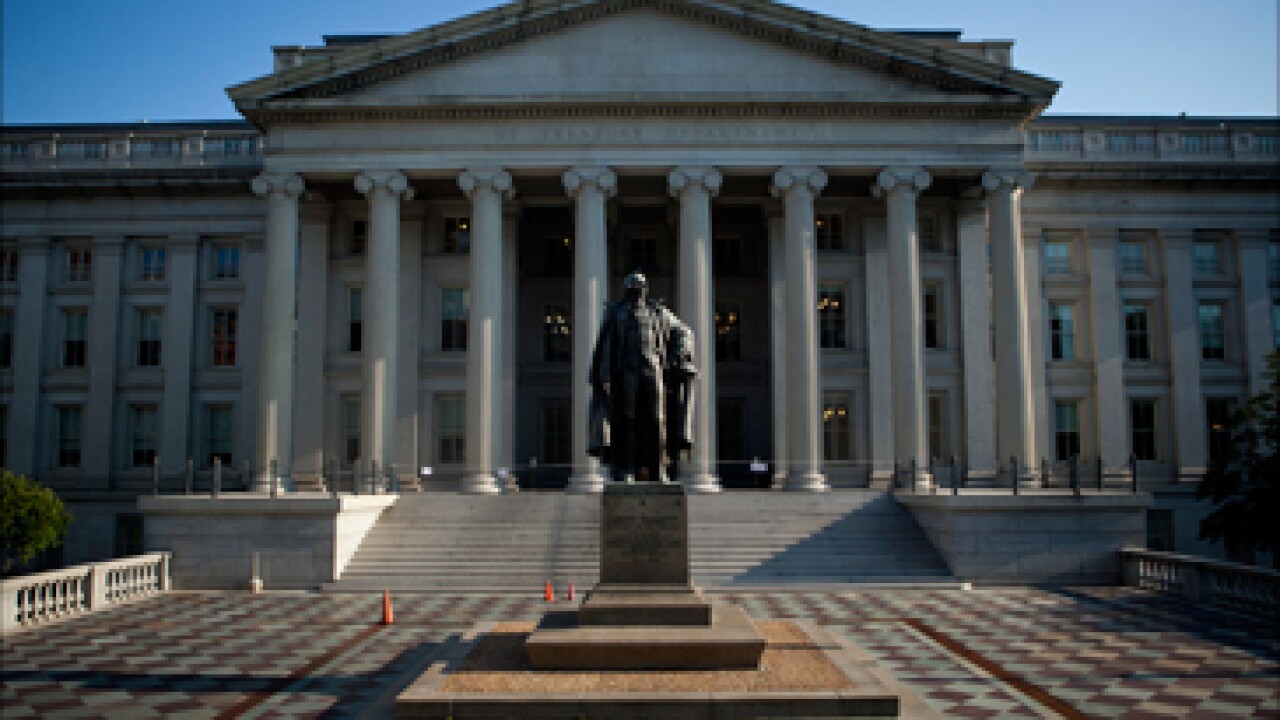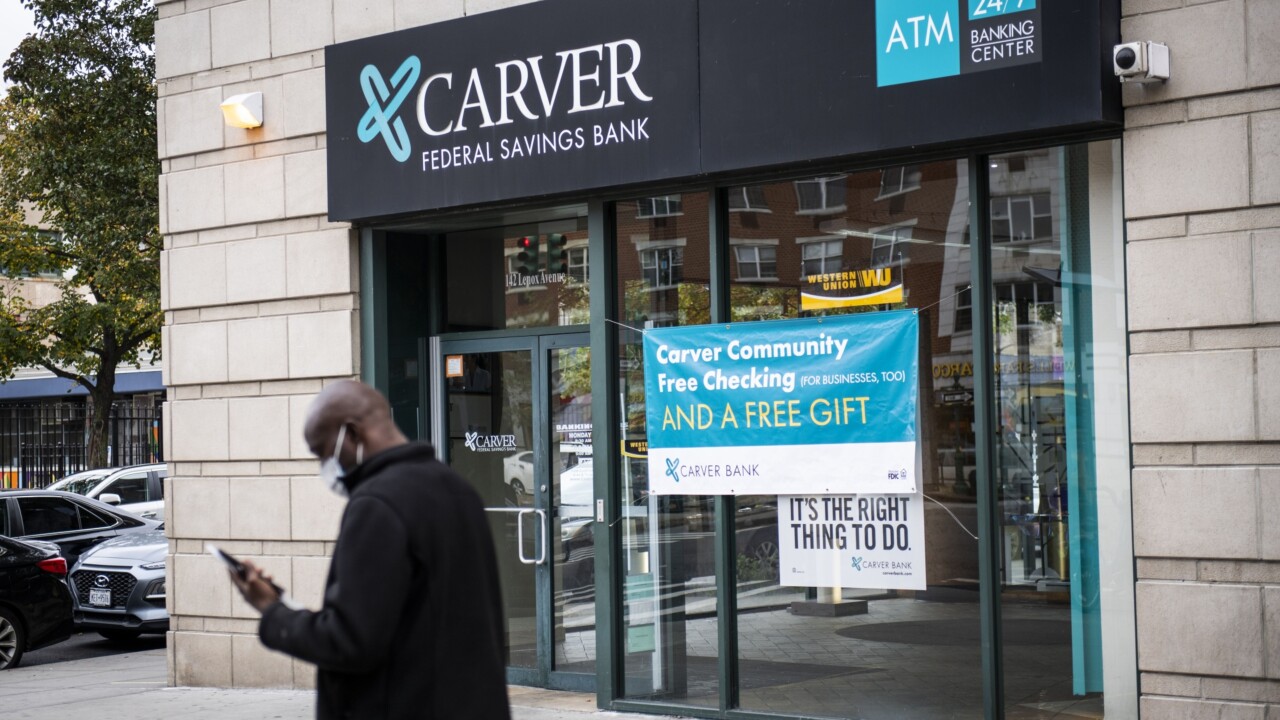WASHINGTON — Just two years after finalizing the first significant regulatory overhaul of the Community Reinvestment Act in the 1990s, then-Comptroller of the Currency Eugene Ludwig had another pitch for policymakers: It was time to expand the law's anti-redlining obligations beyond banks.
“At the end of 1996, for the first time, the dollar volume of mutual funds exceeded the dollar volume of bank deposits,” Ludwig said in a speech to the National Urban League in August 1997. “In these circumstances, I think you will agree that it makes sense to start thinking about how these financial powerhouses can shoulder some of the public responsibilities that banks today must assume.”
Those trends have only accelerated in more recent years: Between 2010 and 2017, the global assets of nonbank lenders alone

Ludwig, chairman and CEO of Promontory Financial Group, told American Banker in a recent interview that now is the time for lawmakers to extend CRA to include nonbank financial institutions such as online lenders, student loan servicers, credit unions, hedge funds and more. Doing so could make a big difference in this tumultuous period of widespread protests against racial inequality amid the coronavirus pandemic and a recession, he says.
“This is a time and will be increasingly a time of great need for us to come together and address, holistically, our social and economic problems for low- and moderate-income people," Ludwig said. "We have an opportunity now to take the difficult, challenging period we’ve been living through and use it to the benefit of the nation going forward.”
The following conversation has been condensed and edited for clarity.
You’ve talked a long time about how the Community Reinvestment Act should apply to more organizations than just banks. How does that belief apply to this moment?
GENE LUDWIG: The CRA is certainly not a cure-all for all the economic and social injustices that we face, but it’s an important tool in terms of dealing with those issues. Within the financial community, just by the size of banking today versus banking when the CRA passed in the 1970s, there has been a dramatic change. Nonbank providers are, relatively speaking, considerably larger. So in terms of the CRA firepower, you might say, we're only seeing a portion of what it's capable of doing to help, because it's only dealing with a portion of the financial community that is smaller, relatively speaking, than it was when this concept first arose.
You’re talking about bringing nonbank lenders into the CRA framework and giving them the same responsibilities as banks?
Nonbank financials. I wouldn’t limit it to lenders. Applying CRA to nonbank financials would mean that you'd basically be expanding the concept, because there certainly are nonbank lenders of importance in the country, but there are a number of large [nonbank] financials that do things other than lending as a primary business, and I'd propose that they be included in the set of responsibilities.
In terms of cost, CRA compliance might not compare Bank Secrecy Act compliance, but banks say it is still a considerable lift. Aren’t nonbanks going to say, look, we want to help, but we’re not banks and shouldn’t be regulated as if we are?
There’s no doubt that there have been efforts — in many ways, successful efforts — to try to deal with the compliance burden that CRA, like virtually any law, creates. I honestly think more can be done in that regard, and should. To do this, one needs a multi-agency regulatory effort, an effort that brings banks and community groups together to lessen burden and yet improve outcomes the way we did in the mid-1990s. One promising avenue in this regard would be to explore what more can be done with the “
As long as we’re talking about expanding CRA beyond banks, is there room for other kinds of businesses to have legal obligation to invest back into their communities? Nonfinancial businesses? What about large corporations taking Paycheck Protection Program loans?
Just as a moral matter for our society, I think the largest corporate entities ought to have responsibility towards the broader community. And certainly, financial services companies have a little bit of a road map in CRA. How much you expand a CRA obligation beyond finance deserves considerable thought as well as care. But at this time in history, it seems to me we have not necessarily a model, but a framework for thinking about the issue of giving back. The framework is this: If you're supported by the federal government, economically — and everybody is to some degree or another, and that is particularly obvious right now — then in particular, you have a broader set of responsibilities, it seems to me. To perhaps put a finer point on this, where the [Federal Reserve] is using its tools to support a business, or an investor in a business, it is using the government safety net, and this should particularly convey upon the recipients’ additional societal obligations. Governmental support expands the government's moral authority to ask of the entities that received that support to assume they have responsibilities to give back to the broader U.S. community.
How does the newly modernized framework of CRA affect what you’re proposing? Does it?
Clearly, CRA remains a vibrant part of finance — something that's important enough that it was the lead issue for a serious and new regulator. That’s because it has been successful. Comptroller Otting wasn’t suggesting it be eliminated, or castigated, or criticized for not being effective. His desire was to expand its effectiveness and expand its scope and scale. I think that’s a good sign about the CRA, generally speaking.
Do you think Comptroller Otting’s reforms make it easier for nonbank financials to comply with an expanded CRA in a way they couldn’t before?
I think in one sense the [former] comptroller’s reform does in that it attempts to be less place-based and more national in scope. When CRA was passed, and even in my time back in 1995, doing your banking business was much more geographically focused. The technologies that we use today were not as advanced. Today, as we all know, there are many companies, including financial companies, that do a national business, even though they don’t have a physical presence all over the United States. That’s true for many businesses. So I think that makes it more modern and more amenable to other kinds of financial businesses that are more technologically oriented and less branch- and physical presence-oriented.
So how do we actually expand CRA? Congress?
I’m pretty certain you do need congressional action. I don’t think the bank regulators can do this, with the possible exception of expanding it to nonbank affiliates of banks. But that too may need congressional action. It’s a big issue. … Even if we had only language and a statute that was standard-setting — affirmative in tone without enforcement, in terms of responsibilities of companies coming to the Fed window, or companies in finance generally — I think that would be helpful, from a moral perspective. If we are to have compliance, oversight and enforcement for nonbanks vis-à-vis a CRA obligation, I think it would be appropriate to look to the nonbank regulators in some cases: the Securities and Exchange Commission, for example, possibly the Federal Trade Commission or the Consumer Financial Protection Bureau. … But I don’t believe, at the end of the day, it would be the bank regulators that would be the oversight and enforcement mechanisms for nonbank financials.
Is there a type or group of nonbank financials in particular that you think ought to be doing CRA compliance today? Do you have a wish list?
I don’t really have a list in mind. I do think that when you look at the following factors, we really ought to be expanding CRA beyond banks. No. 1, most of the financial system is outside the banking system today. No. 2, most of the financial system, or a lot of the financial system, has been directly or indirectly benefited by the federal government safety net. Three, the world itself is changing, and the tools that low- and moderate-income people need and want are not just loan tools. So there’s a reason to expand CRA beyond bank lending. And finally, this is a time and will be increasingly a time of great need for us to come together and address, holistically, our social and economic problems for low- and moderate-income people. We have an opportunity now to take the difficult, challenging period we’ve been living through and use it to the benefit of the nation going forward. … The CRA is one tool. It’s not the only tool, but it’s a proven tool, and it’s a tool that can be more expansive and do more good.





